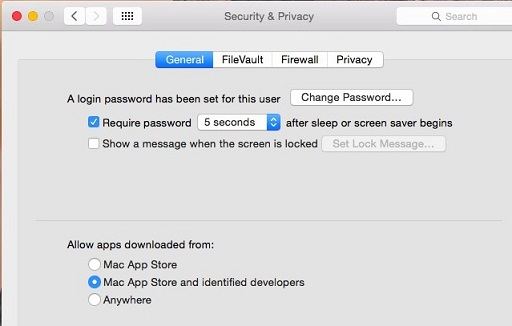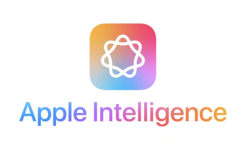
Ultimate Protection Against Adware: Removal Tools and Built-in Options
This is our next story about how to stay safe online. If you’ve read Ultimate Protection Against Malware, you already know about viruses, trojans and malware; and why it’s so important to keep certain antivirus options on. But, this is not the only crap software that can damage your system, Windows or OS X alike. (Yes, Macs are susceptible to this kind of malware now as well.)
Adware stands for advertising-supported software that redirects you to sponsored advertising sites, cripple your searches and annoy you with pop-up ad windows. This program cannot be detected by a user, as it features no icon in the tray or on the desktop, and the browser’s odd behavior is the only way to spot its presence. Which is why adware cannot be uninstalled and deleted via the system interface. No, changing browsers or rebooting won’t help either.
Once upon a time, there were adwares which infested only one or two of the most popular browsers, like Internet Explorer or Opera. But nowadays, hackers never forget to list all the browsers known to users, including the Chrome-like, Comodo. Again, changing browsers is like sweeping dust under the carpet. The running adware slows down the system, causes various lags and more often than not, collects info about the sites you visit.
From a legal point of view, distributing adware is not actually a crime. Moreover, some laptop manufacturers have been caught installing adware into their products from the box. For example, Lenovo was busted installing the Superfish adware into their laptops a couple of years ago. The enraged Lenovo community made the company stop the practice and issue a patch to eliminate the adware. And it’s not just an ethical issue, it’s a technical one.
The system with the adware inside is a compromised system. It’s like having a house with the back door that never closes. And the problem was, not every antivirus could fix it. Recently, only the most advanced and popular anti-adware and removal tools like Malware Bytes were able to.
Even if you don’t have any of these tools currently on your computer, you can always try a free demo and see how it sits with your system. We would recommend to be very wary of any third-party removal, stand-alone tools that were hyped up in the wake of the WannaCry attack. Many of them are rouge tools. You download the free version, scan your computer and are given a long list of alleged adware programs. To remove them, you have to pay for the full version. The thing the program doesn’t tell you, is that most of files it pulls up are harmless cookie files.Losing money and staying with an infested computer is one thing, but getting a serious trojan or a super adware to top those you already have, is another. The fake removal tools can turn out to be malicious themselves and you can cripple your system instead of curing it. The owners of the site you downloaded the rouge software from, get paid for every successful download. They don’t care what will happen to someone’s computer after that.
Can you protect yourself from downloading the adware in the first place to save time, money and nerves? Sure! You have to do two things to achieve it: to control your downloads entirely and to keep your system updated. Both Windows and OS X feature built-in options for checking on available downloads. It’s Firewall and Windows Defender for Windows, and XProtect and Gatekeeper for OS X.
For the same reasons that were specified in the first article, it’s very important to keep these tools updated. Windows Defender can stand for a full-scale antivirus software if you haven’t bought any already. It can be updated separately from the entire Windows OS, while on Mac you have to update the OS to get latest updates for XProtect. Unlike its Microsoft counterpart, XProtect is part of File Quarantine and hard to notice. It’s seen only when you download a file from Web.

Source: https://www.howtogeek.com/wp-content/uploads/2015/05/ximg_55528e0ecf655.png.pagespeed.gp+jp+jw+pj+ws+js+rj+rp+rw+ri+cp+md.ic.Jr-xZJLaGH.jpg
You can also tweak the downloads options and check the files types you want to download. For that you’ll need Gatekeeper.

Source: https://www.howtogeek.com/wp-content/uploads/2015/05/ximg_55528d1bce9f8.png.pagespeed.gp+jp+jw+pj+ws+js+rj+rp+rw+ri+cp+md.ic.8DJJV4TUY4.png
There are three options as you can see: App Store, App Store and identified partners and Anywhere. The last option is the most dangerous of all. We recommend to stick to App Store and identified partners.
With Windows it’s trickier. Microsoft’s first line of defense is the Windows Firewall turned on in Settings. Firewalls are used in buildings to block the fire expansion. They are literally brick walls installed on the roofs. The computer’s firewall though is more like a mesh screen to sift the traffic through. The mesh size you set as you like by listing the allowed programs. You can find detailed manuals on Microsoft Support page. We just mention that it’s wise to always keep the firewall turned on if it doesn’t conflict with your antivirus.
Here’s where tricky part comes in. The firewall can conflict with your antivirus, or block your mailing program. Anyway, the firewall won’t save the day if you’re careless about your downloading. Surviving Rule #1 runs: Turn Off Automated Download in Your Browser. No matter what browser you use, kill the automated download option and check ‘Always ask about download’. Whenever your browser starts downloading you should be aware of what it downloads and where from.
Recent news has it, that malware can be tethered to the inoffensive go-to links in the webpage. But if you forbade unauthorized download, your browser immediately alerts you. And here works Surviving Rule #2: Never Click ‘Yes’ Until You’re 100% Sure. Download files from Windows Store or software official sites. Do not trust sites titled like download dot com or freedownload dot com and such likes. If the name of the file looks suspicious or incomprehensive, like a chain of letters and digits, click ‘No’. Google the file’s name and see if it’s in the viruses list.
Be careful while installing software. Sometimes they go with a bunch of additional tools and utilities or browsers and an adware can well be among them. Uncheck the boxes and make sure you install just the game or tool you wanted from the start.
- You can sell your used iPhone, iPad, iPod, MacBook, iMac, Apple TV, Apple Display, iPod at iGotOffer.com for good price without any risk of being deceived: Sell used electronics today!






Facebook
Twitter
RSS